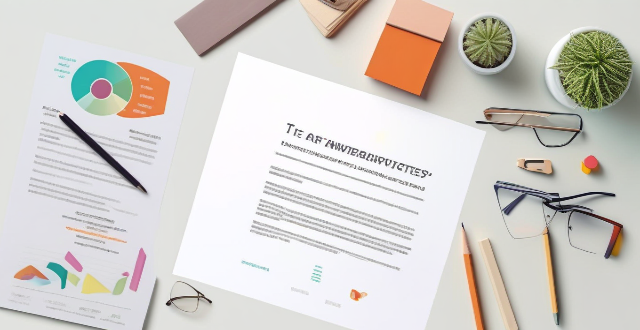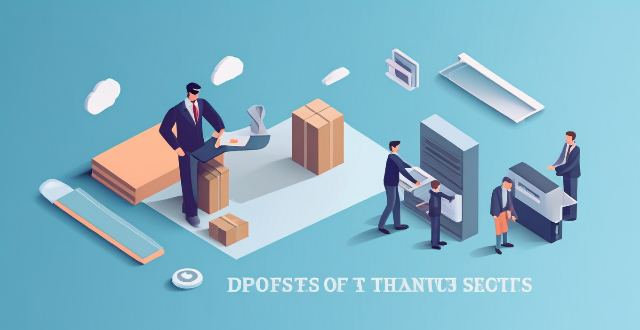Refund Claim

Can I claim a tax refund on online purchases when traveling abroad ?
Can I Claim a Tax Refund on Online Purchases When Traveling Abroad? When traveling abroad, it is possible to claim a tax refund on certain online purchases. However, the process and requirements can vary depending on the country you are visiting and the specific policies of the retailer or e-commerce platform. In this article, we will explore the different factors that can impact your ability to claim a tax refund on online purchases when traveling abroad. Key Factors to Consider: 1. Country-Specific Policies 2. Retailer or E-Commerce Platform Policies 3. Product Type 4. Purchase Amount 5. Timeline Steps to Claim a Tax Refund on Online Purchases: 1. Research Tax Refund Policies 2. Check Product Eligibility 3. Meet Minimum Purchase Requirements 4. Save Receipts and Documentation 5. Fill Out Tax Refund Forms 6. Submit Documentation and Receive Refund

Is there a minimum purchase amount to qualify for a tax refund ?
The minimum purchase amount for tax refunds varies by country and product type. Other requirements include timeline, product type, receipts, and departure within a specific time frame. To claim a refund, save receipts, fill out forms, visit a customs office, submit documentation, and wait for the refund to be processed.

What is a tax refund for shopping ?
The article provides a comprehensive guide on what a tax refund for shopping is, how it works, its benefits, and tips for successful claims. It explains that a tax refund for shopping allows tourists to reclaim some of the Value Added Tax (VAT) they have paid on purchases made during their trip abroad. The process involves keeping receipts, meeting minimum purchase amounts, obtaining tax-free forms, customs declaration, and claiming refunds. The article also highlights the benefits of tax refunds, including savings, additional discounts, and convenience, and offers tips for successful claims such as planning ahead, organizing documents, allowing enough time, and double-checking amounts.

Can I still get a tax refund if I have a connecting flight within the EU ?
To obtain a tax refund when you have a connecting flight within the EU, follow these steps: purchase goods in a participating store, complete the tax-free shopping form, obtain a customs stamp, and claim your tax refund. Having a connecting flight does not affect your ability to get a tax refund.

Can I get a tax refund if I'm not a resident of the country where I shopped ?
Non-residents can claim tax refunds for purchases made abroad, but must meet certain criteria and follow specific procedures. Eligibility usually requires buying goods for personal use and taking them out of the country within a set time frame. Documentation such as receipts and invoices is crucial for proving eligibility. Tax refund forms can be obtained from stores or airports and must be completed with personal and purchase details. Customs officials stamp these documents to verify export of the items. Submission of stamped documents to the appropriate authority initiates the refund process, which may result in direct deposit or mailed refunds. Successful tax refund claims depend on adhering to these steps and retaining all necessary paperwork.

How long does it typically take to receive a tax refund after leaving a country ?
Leaving a country can be a stressful process, and one of the concerns that many expatriates have is how long it will take to receive their tax refund. The answer to this question depends on several factors, including the country you are leaving, your residency status, the method of application, and the time of year. By following best practices such as filing electronically, providing complete information, following up with tax authorities, and considering professional help, you can help speed up the process and receive your refund more quickly.

Is there a difference in the tax refund process between goods for personal use and commercial resale ?
The tax refund process for goods varies based on whether they are purchased for personal use or commercial resale. Personal use items may qualify for tax-free shopping, deductions as expenses, or retail returns. Commercial resale goods often benefit from sales tax exemptions, input tax credits, export refunds, and inventory write-offs. The key differences include sales tax treatment, deduction eligibility, refund mechanisms, and documentation requirements.

How does the tax refund process work in Europe ?
The Tax Refund Process in Europe is a guide for tourists on how to get a Value Added Tax (VAT) refund when shopping in the European Union. The VAT rate varies by country and ranges from approximately 15% to 27%. To be eligible for a VAT refund, you must be a non-EU resident, goods must be for personal use, purchases must be taken out of the EU within three months of the issue date on the receipt, and there is usually a minimum purchase amount per store to qualify for a refund. The steps involved in getting a VAT refund include making the purchase, obtaining the VAT refund form, validation at the point of departure, submitting the form, and receiving your refund. Additional tips include keeping all original receipts and forms until you have received your refund, being aware of processing fees, and using direct VAT refund services offered by some stores.

What do I need to know about VAT refunds when traveling internationally ?
VAT (Value Added Tax) is a consumption tax applied on products or services purchased within a country. International travelers may be eligible for a VAT refund if they purchase goods to take out of the country where they made the purchase, often referred to as "tax-free shopping". To get a VAT refund, travelers must check eligibility, get tax-free forms, keep receipts, procure documents from customs, claim their refund, and be aware of time limits, minimum purchase amounts, fees, and currency conversion. Tips for successful VAT refunds include planning ahead, consolidating purchases, tracking deadlines, verifying retailer participation, and consulting with experts. By understanding the VAT system and following these guidelines, international travelers can potentially save money on their shopping experiences.

How do I file a claim with my sports insurance company ?
Filing a claim with your sports insurance company is important to ensure compensation for injuries or damages during sports activities. To file a claim, gather necessary documents, contact the insurance company, fill out the claim form accurately, submit it with supporting documents, and follow up on the claim's progress. Staying organized and persistent can increase chances of receiving deserved compensation.

Are there any advantages to using a tax refund service company instead of doing it myself ?
Using a tax refund service company offers several advantages, including time-saving, accuracy, expertise, convenience, and peace of mind. These services can help maximize refunds or minimize tax liability by ensuring accurate tax preparation and staying up-to-date with changing tax laws and regulations.

How can I calculate the estimated tax refund for my purchases ?
To calculate an estimated tax refund for purchases, followTo calculate an estimated tax refund for purchases, follow sales tax rate, calculate the and subtract any applicable tax credits or deductions from the total sales tax paid to estimate the refund. Consult a tax professional for accurate information.

What documents are required to apply for a shopping tax refund ?
The text is a topic summary for "Required Documents for Shopping Tax Refund Application." It lists the necessary documents needed to apply for a tax refund, including a passport or travel document, receipts and invoices, a tax-free form, credit card or bank statement, boarding pass or flight itinerary, customs declaration form, and shipping documents (if applicable). The text also mentions that once all the required documents are gathered, the tax refund application can be made at the airport or through the designated tax refund office in the city where purchases were made.

Can I get a refund for an app I purchased on the App Store ?
You can request a refund for an app you purchased on the App Store, but there are certain conditions that must be met in order to qualify. You have 14 days from the date of purchase to request a refund, and the app must not have been downloaded or launched more than twice. You must also provide a valid reason for your request. To request a refund, open the App Store app on your device, tap on your profile picture in the top right corner, select "Purchase History" from the drop-down menu, find the app for which you want to request a refund and tap on it, tap on "Report" next to the app, and follow the prompts to submit your refund request. Be honest and clear about why you are requesting a refund, provide any relevant information or screenshots that support your request, and keep track of your purchase history to make sure you meet the eligibility criteria before submitting your request.

Are there any specific items that cannot be included in a tax-free shopping claim ?
Certain items may not qualify for tax exemption in tax-free shopping, including alcohol and tobacco products, perishable food items, medications and prescription drugs, firearms and weapons, and hazardous materials. The specific items that cannot be included in a tax-free shopping claim may vary depending on the country's customs regulations and policies.

What happens if I lose my tax-free shopping forms or receipts ?
If you lose your tax-free shopping forms or receipts, you will be unable to claim the refund you are entitled to, which means you will miss out on the savings that come with tax-free shopping. Losing these documents can also make it difficult to resolve any disputes that may arise regarding your purchases, such as returning an item or making a warranty claim. In some cases, losing your tax-free shopping forms or receipts may not entirely prevent you from claiming a refund, but it can significantly delay the process. To avoid losing your tax-free shopping forms or receipts, you should keep them in a safe place, take photos of them, make copies, and check regularly to ensure that you still have them.

When should I claim Social Security benefits ?
The text discusses the decision of when to start claiming Social Security benefits. It outlines four factors to consider: age and health; work history; financial situation; and marital status. The text suggests that delaying claiming benefits can increase the monthly benefit amount, but this depends on individual circumstances such as health and financial situation. It emphasizes the importance of careful consideration and consulting with a financial advisor before making any decisions.

How does the claims process work after I've bought insurance ?
After purchasing insurance, understanding the claims process is crucial. The process typically involves documentation and preparation, filing a claim, assessment and investigation, approval or denial, receiving benefits, and considering deductibles/excesses and policy renewal impacts. It's important to gather evidence, notify your insurer, complete a claim form, provide necessary details, review the initial assessment, potentially undergo an investigation, receive approval or denial, arrange for payment, follow up as needed, pay any deductibles/excesses, and be aware of potential premium impacts at renewal. Refer to your policy documents for detailed instructions tailored to your insurance provider's processes.

How quickly can I get reimbursed by my travel insurance company ?
The time it takes to get reimbursed by your travel insurance company depends on the type of claim you are filing and the policies of your insurance provider. Emergency medical claims can be processed within a few days to a week, while non-medical claims can take longer depending on the nature of the claim and the required documentation. To expedite the process, it's important to read your policy carefully, keep all receipts and documentation, contact your travel insurance company promptly, submit complete and accurate information, and follow up on your claim if necessary. By following these tips, you can help ensure a smoother and faster reimbursement experience.

What documents do I need to file a claim with my travel insurance ?
When filing a claim with your travel insurance, thereWhen filing a claim with your travel insurance, there will need to have on hand These documents are crucial in proving the validity of your claim and ensuring that you receive the compensation you deserve. In this article, we will discuss the various documents required for a travel insurance claim and how to properly submit them. If your travel plans were affected by an unexpected event such as a theft, accident, or natural disaster, you will need to provide a police report or incident report. This document serves as proof that the event occurred and provides details about what happened. Make sure to obtain a copy of the report as soon as possible after the incident occurs. If you fell ill or injured during your trip, you will need to provide medical records and receipts from any treatments or medications you received. These documents should include information about your diagnosis, treatment plan, and any prescriptions you were given. Keep all receipts for medical expenses, including doctor visits, hospital stays, and medication purchases. If your flight was cancelled or delayed due to unforeseen circumstances, you will need to provide documentation from the airline or transportation company. This may include a cancellation notice or delay notice, as well as any correspondence between you and the airline regarding the issue. Be sure to keep all communication related to the cancellation or delay. If any of your belongings were lost or stolen during your trip, you will need to provide documentation of their value and ownership. This may include receipts for purchased items, appraisals for valuable items, or photographs of the lost or stolen property. You should also contact local authorities to file a report and obtain a case number. To prove that you had planned to travel and incurred expenses related to your trip, you will need to provide your travel itinerary and receipts for any pre-paid expenses such as hotels, rental cars, and excursions. Keep all receipts and confirmation emails related to your travel plans. In some cases, you may also need to provide copies of your passport and visa to prove your identity and eligibility to travel. Make sure to keep copies of these documents in a safe place throughout your trip. Once you have gathered all necessary documents, it's time to submit your claim to your travel insurance provider. Follow these steps to ensure a smooth claims process: 1. Review your policy terms and conditions carefully to understand the claims process and any specific requirements or deadlines. 2. Contact your travel insurance provider to initiate the claims process and obtain any necessary forms or instructions. 3. Fill out all required forms accurately and completely, providing detailed information about the incident and supporting documentation. 4. Submit your completed forms and supporting documents to your travel insurance provider according to their instructions. This may involve mailing physical copies or uploading digital copies online. 5. Follow up with your travel insurance provider regularly to check on the status of your claim and address any questions or concerns they may have. By following these steps and providing all necessary documents, you can increase your chances of receiving a successful travel insurance claim and being compensated for any losses or expenses incurred during your trip.

What happens if I need to cancel my trip after purchasing travel insurance ?
If you need to cancel your trip after purchasing travel insurance, review your policy for coverage details and time limitations. Contact your insurer to inform them about the cancellation and provide necessary documentation. File a claim by submitting a claim form with supporting documents. Wait for reimbursement, which may vary in processing time and method. Consider rescheduling instead of cancelling if your policy includes trip interruption coverage. Understand that there might be non-refundable expenses even with coverage. Each policy is different, so review your specific policy details and contact your insurer for tailored guidance.

What is the difference between a duty-free and tax-free purchase ?
The difference between a duty-free and tax-free purchase is that the former is exempt from customs duties, typically made in international travel hubs, while the latter is exempt from sales tax or VAT, can be made anywhere within a country.

How can I avoid losing my luggage or dealing with lost baggage claims at the airport ?
Losing your luggage or dealing with lost baggage claims can be a stressful experience, especially when you are traveling for business or pleasure. However, there are several steps you can take to minimize the risk of losing your luggage or dealing with lost baggage claims at the airport. Here are some tips: - Pack light and carry-on only: One of the easiest ways to avoid losing your luggage is to pack light and carry-on only. This way, you don't have to check in any luggage, and you can keep your belongings with you at all times. If you must check in luggage, make sure it is clearly labeled with your name, contact information, and destination address. - Use a luggage tracker: Another way to avoid losing your luggage is to use a luggage tracker. These devices use GPS technology to track your luggage's location in real-time, so you can quickly locate it if it gets lost. Some popular luggage trackers include LugLoc, Trakdot, and AirTags by Apple. - Keep your belongings organized: When packing your luggage, make sure to keep your belongings organized and easily accessible. This way, you can quickly identify any missing items and report them to the airline immediately. It's also a good idea to keep a list of all the items you packed in case you need to file a claim later on. - Check in online: Checking in online before your flight can help you avoid long lines at the airport and reduce the chances of your luggage getting lost. When you check in online, you can print your boarding pass and bag tags at home, which will save you time at the airport. - Choose a reputable airline: Choosing a reputable airline can also help you avoid losing your luggage or dealing with lost baggage claims. Look for airlines that have a good reputation for handling luggage and customer service. You can check online reviews or ask friends and family for recommendations. - File a claim immediately: If your luggage does get lost, make sure to file a claim with the airline immediately. Most airlines have a specific process for filing a claim, so make sure to follow their instructions carefully. Keep all receipts and documentation related to your luggage, including the baggage claim ticket and any communication with the airline. In conclusion, losing your luggage or dealing with lost baggage claims can be a frustrating experience, but there are several steps you can take to minimize the risk. By following these tips, you can enjoy a stress-free travel experience and avoid the hassle of lost luggage claims.

What happens if I make a mistake in my personal income tax calculation ?
Mistakes in personal income tax calculation can lead to underpayment or overpayment of taxes, errors in reporting income or deductions, and potential penalties, interest charges, or even criminal charges. To avoid these consequences, it's essential to stay organized, use tax software or consult a professional, review your return carefully, and file on time.

Are the items in a sample sale returnable or exchangeable ?
Sample sales can have various return and exchange policies. Some items are final sale, while others may have limited return periods or require the item to be in original condition for returns. Some retailers offer only store credit instead of refunds, and others allow exchanges but no refunds. It's important to know the specific policies before purchasing to avoid disappointment later on.

Which website is considered the best for buying books online ?
The text discusses Amazon as the best website for purchasing books online due to its user-friendly interface, wide range of books, competitive pricing, fast shipping and delivery options, customer reviews and ratings, and easy returns and refunds.

Can I return or exchange items purchased through团购优惠 (tuan gou youhui) ?
This text discusses the concept of Tuan Gou Youhui, a popular online shopping method in China that allows customers to purchase products at discounted rates in large group sizes. It then explores the return and exchange policies for items purchased through this method, noting that these policies vary depending on the specific merchant and product but most merchants offer some form of return or exchange policy. The text provides general guidelines for understanding return and exchange policies and steps to return or exchange an item, emphasizing the importance of contacting customer service, providing necessary information, packaging the product carefully, shipping it according to instructions, waiting for refund or exchange, and confirming receipt of refund or exchanged product. Finally, it concludes that by understanding these policies and following appropriate steps, customers can ensure a smooth and hassle-free experience when shopping through Tuan Gou Youhui.

What is the process of returning a product in global shopping ?
### Summary: Returning a product purchased through global shopping involves several steps, including checking the return policy, initiating the return process, preparing and shipping the item back, monitoring your refund, documenting the process, and considering international factors such as customs and currency exchange rates. It's important to stay organized, use trackable shipping methods, and keep records of all communications with the seller to ensure a smooth and effective return.

What is the difference between federal and state income tax calculations ?
The article discusses the process of calculating federal and state income taxes in the United States. Federal income tax calculations are based on the Internal Revenue Service (IRS) tax code, while state income tax calculations vary by state due to different tax laws and regulations. Both federal and state taxes involve determining taxable income and applying tax rates, but specific details such as rates, deductions, and exemptions can vary significantly between the two levels of government.